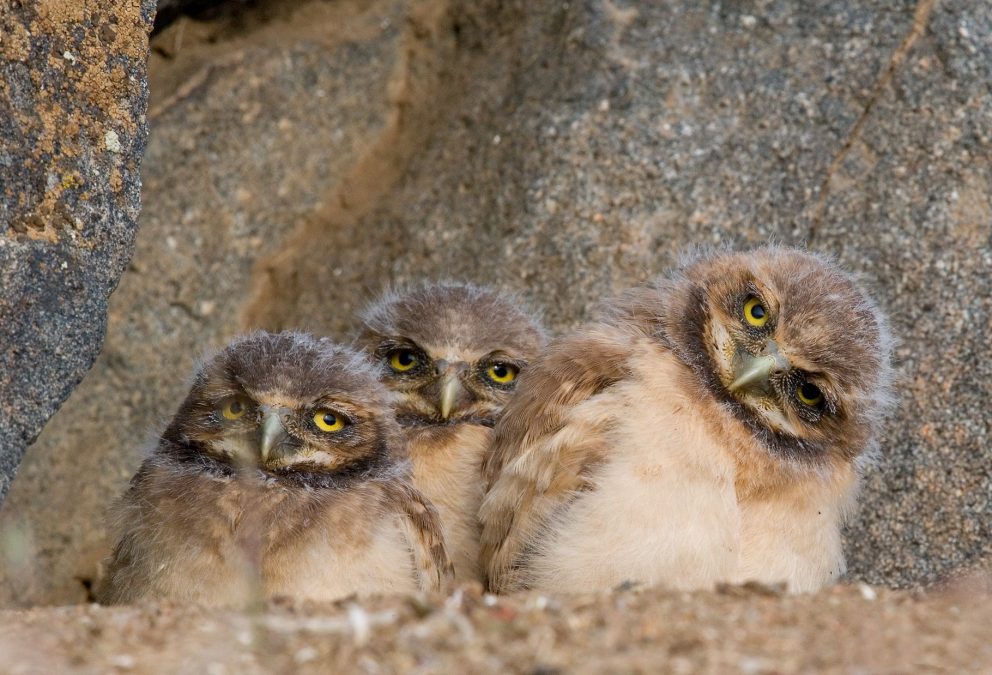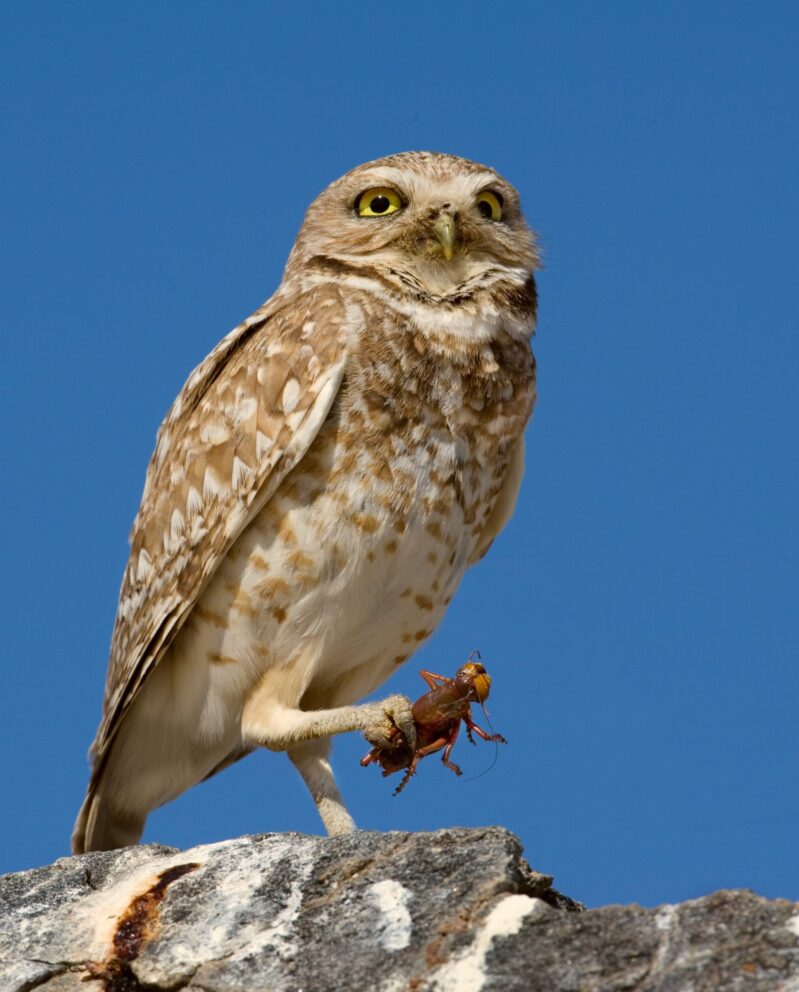- SCIENTIFIC NAME
- Athene cunicularia hypugaea
- CLASSIFICATION
- Bird
- LIFE SPAN
- 6-8 Years
- SIZE
- 7.5-9.8” | 0.25-0.33lbs
- STATE CONSERVATION STATUS
-
- Priority Species
- FEDERAL CONSERVATION STATUS
- Least Concern
- GAME STATUS
- Non-Game
- GAME TYPE
- None
- Washoe
- Humboldt
- Pershing
- Churchill
- Mineral
- Lyon
- Douglas
- Carson City
- Storey
- Elko
- Lander
- Eureka
- White Pine
- Esmeralda
- Nye
- Lincoln
- Clark
Habitat & Range
Western Burrowing Owls can be found throughout Nevada. They require habitats that support burrowing mammals as they do not excavate their own burrows but in instead inhabit abandoned burrows. Areas with short vegetation, open grasslands, sagebrush, and even vacant lots near humans are all considered optimum habitat for the Western Burrowing Owl.
- Cold desert shrubland and sagebrush
- Grasslands
- Mojave desert
Threats
- Habitat Degradation
- Habitat Loss
Natural History
Unlike most owls, Western Burrowing Owls are not exclusively nocturnal. They are often active during the day. Their diet is made of almost entirely invertebrates like insects and spiders. Although they can fly, they do most of their foraging on the ground by walking and hopping while searching for invertebrates. They will occasionally catch and eat small mammals, snakes, lizards, bats, and earthworms.
Western Burrowing Owls are monogamous and will produce one clutch a year typically. They can reproduce more than once a year, but that is uncommon. They will lay between two and 12 eggs. After about 30 days of incubation the chicks will hatch. Incubation is the female’s primary role with little help from the male. Approximately 50 days after hatching the chicks are independent of their parents.
Burrow selection is very important for these birds. They often choose burrows that have a lot of other burrows nearby for potential areas to escape to. Burrows with short perches nearby so they can keep an eye out for predators such as birds of prey, coyotes, foxes, badgers, bobcats, and skunks. They do not excavate their own burrows, but instead inhabit the abandoned burrows mammals such as ground squirrels, badgers, skunks, tortoises, and marmots. When they take over a burrow, they will modify it to their preferences using their beaks to dig and kick the dirt out with their feet.
Fun Facts














